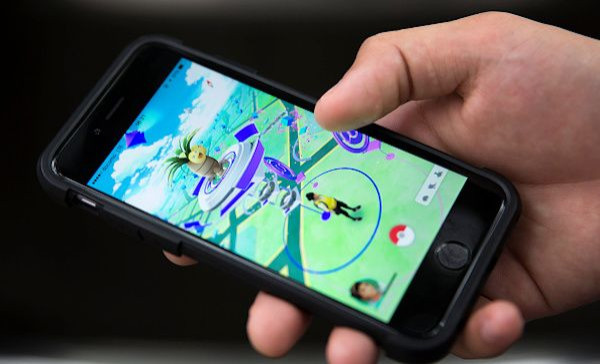Study: Pokémon Go Leading To 'Serious Risk' From Distracted Drivers, Passengers And Pedestrians

Since Pokémon Go launched on July 6, the app has skyrocketed in popularity and has generated over $500 million in revenue. Players are devoting a good chunk of time on the game, as mobile app intelligence firm SensorTower found that players spent an average of 32 minutes a day catching Pokémon in August. Amidst the popularity, a team of researchers have published an advisory in journal JAMA Internal Medicine warning the game is a distraction to pedestrians and drivers.
"Pokémon GO, an augmented reality game, has swept the nation," write the authors. "As players move, their avatar moves within the game, and players are then rewarded for collecting Pokémon placed in real-world locations. By rewarding movement, the game incentivizes physical activity. However, if players use their cars to search for Pokémon they negate any health benefit and incur serious risk."
The researchers explain that the leading cause of death amongst the game's demographic—16-to24-year-olds—are motor vehicle crashes. That, coupled with statistics surrounding distracted driving, can make the game fatal.
"Motor vehicle crashes are the leading cause of death among 16- to 24-year-olds, whom the game targets," write the authors. "Moreover, according to the American Automobile Association, 59% of all crashes among young drivers involve distractions within 6 seconds of the accident. We report on an assessment of drivers and pedestrians distracted by Pokémon GO and crashes potentially caused by Pokémon GO by mining social and news media reports."
The team of scientists gathered anonymized data from Twitter (looking at posts containing the terms “Pokémon” and “driving,” “drives,” “drive,” or “car”) and reviewed a random sampling of tweets to see if a driver way playing, a passenger was playing or a distracted pedestrian playing Pokémon GO while navigating traffic. Additionally, reports from Google News about “Pokémon” and “driving” were gathered. Analyzing the data, which the authors acknowledge is a "limited scope," found that 33 percent of tweets reflect the driver, passenger or pedestrian was distracted by the game.
"Thirty-three percent of tweets indicated that a driver, passenger, or pedestrian was distracted by Pokémon GO, suggesting there were 113,993 total incidences reported on Twitter in just 10 days," conclude the authors. "In contrast, safety messages were less common. The remainder of postings (54%) were hypothetical, unclear, or unrelated. Eighteen percent of tweets indicated a person was playing and driving (“omg I’m catching Pokémon and driving”) and 11% indicated a passenger was playing (“just made sis drive me around to find Pokémon”). Four percent indicated a pedestrian was distracted (“almost got hit by a car playing Pokémon GO”). There were 14 unique crashes—1 player drove his car into a tree—attributed to Pokémon GO in news reports during the same period."
The researchers note that the findings of their study can help game developers, legislators, and the public limit the risk associated with the game and future augmented reality games. The team has some advice for the makers of Pokémon GO, suggesting limitations in certain regions like parking lots and roadways.
"Pokémon GO ’s makers can also voluntarily make their game safer," write the authors. "Game play is already restricted at speeds greater than 10 miles per hour. Making the game inaccessible for a period after any driving speed has been achieved may be necessary given our observations that players are driving or riding in cars. At the same time augmented reality games might be disabled near roadways or parking lots to protect pedestrians and drivers alike, given reports of distractions herein. Games might also include clear warnings about driving and pedestrian safety."
© Copyright IBTimes 2024. All rights reserved.






















